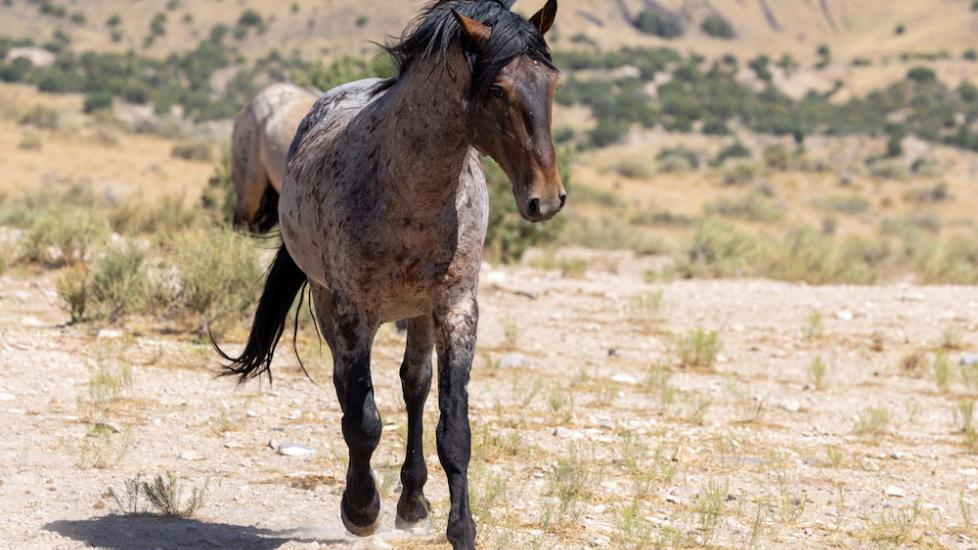American Indian Horse
As its name suggests, this breed was established in the mid-20th century to preserve the pedigrees of the American Indian horses. Ironically, this rare breed is not native to America at all; it is descended from horses brought by Spaniards and trained to adapt to the environment. It goes by several names including mustang, cow pony, buffalo horse, and Spanish pony.
Physical Characteristics
Although it can be shorter or taller, the height of an American Indian Horse ranges from 13–15 hands (52–60 inches, 132–152 centimeters). It is muscular, but not overly so, with sturdy, proportionally sized feet. Its legs, meanwhile, are straight. The American Indian Horse can be seen in almost any color imaginable.
Personality and Temperament
The American Indian Horse generally has a wild nature. It is quite independent and capable of surviving on its own. However, it is also quite amiable and friendly, responding well to instruction and training.
History and Background
The American Indian Horse has a diverse background; in fact, it is really a collection of various breeds. According to experts, the first batch of American Indian Horses came to America with the Spanish Conquistadors in the 16th century.
The American Indian Horse was developed by various Native American tribes for their own use. These horses were prized for their hardiness, agility, and endurance. They were used for transportation, hunting, and warfare. The horses were also considered a valuable commodity and were traded between tribes. The breed nearly became extinct after the arrival of the Europeans, who brought their own horses to the continent. However, through the efforts of a few dedicated breeders, the American Indian Horse was revived in the 20th century.
There are five distinct classifications to the American Indian Horse breed—Class 0, AA, A, M, and P—each of which is judged by the degree that the horse conforms to current standards. The purest bloodlines belong to Class 0, direct descendants of the original horses used by American Indian tribes. This class of horse is maintained for the purpose of preserving the Native American Indian Horse Registry, which was formed in 1961.
Class AA includes American Indian Horses that are at least one-half Class 0. In other words, this class is the result of cross-breeding with other breeds. As long as the sire or the dam is an American Indian Horse, then a horse aged four years or more can qualify for registration in this class.
Class A includes American Indian Horses with unknown or unrecorded bloodlines. What qualifies a horse into this class is obvious American Indian heritage and characteristics. A horse must be at least four years old to be qualified.
Class M includes horses that have been bred according to modern standards. A registered quarter horse, an Appaloosa, or another breed with American Indian blood as evidenced by its records can qualify.
Finally, Class P includes ponies that are typically of the American Indian Horse breed.
Health and Care
Due to its wild and independent nature, the American Indian Horse is quite capable of taking care of itself. It responds well to standard horse care and grooming and is less susceptible to common health problems than other breeds. Some lines, however, are prone to certain health problems, including equine recurrent uveitis, a condition that can cause blindness if left untreated. Regular veterinary checkups and vaccinations are essential to maintaining the health of the American Indian Horse.
They require regular exercise and access to pasture or hay. Their diet should consist of high-quality hay or pasture grass and a small amount of grain or other supplements, as needed. The breed is also known for its strong hooves and does not require shoes in most cases.
Featured Image: iStock.com/twildlife
